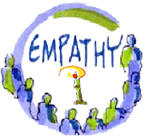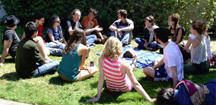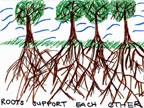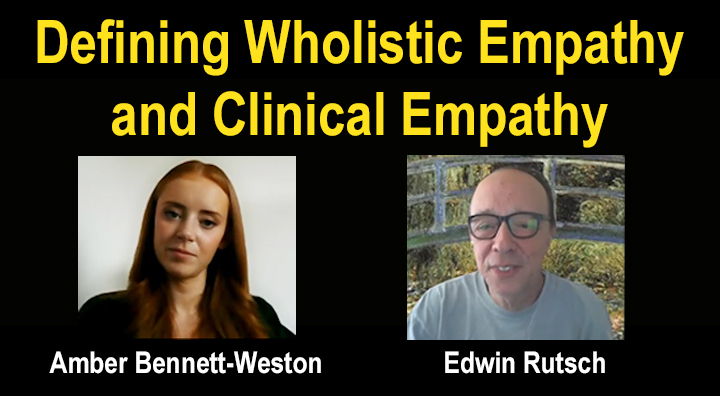|
|
|
Culture of Empathy Builder: Amber Bennett-Weston
Otter.ai 2025-08-13 - Amber Bennett-WestonTranscripthttps://otter.ai/u/cdIr7IVCe8lmCqszXKrFUbxTXSA?view=summary Edwin Rutsch and Amber Bennett-Weston discuss the complexities of defining and measuring empathy, particularly in clinical settings. Amber's research at the Stony Brook, Brook Stoney gate center for empathic healthcare, focuses on enhancing empathy in healthcare training and practice. They critique the affective-cognitive empathy model, advocating for a holistic approach that includes self-empathy and imaginative empathy. Amber's team is developing a short, simple scale to measure empathy in healthcare, considering patient and practitioner perspectives. They emphasize the importance of empathy in reducing burnout, improving patient outcomes, and fostering a supportive healthcare environment. Action Items
OutlineIntroduction and Background of Amber Bennett-Weston
Challenges in Defining Empathy
Components of Empathy
Empathy in Healthcare Settings
Barriers to Empathy in Healthcare
Empathy in Organizations
Active Listening and Empathy Circles
Measuring Empathy
Empathy and Health Outcomes
Future Work and Collaboration
Zoom Meeting assets for Edwin Rutsch's Personal Meeting Room are ready! Meeting summary Quick recapEdwin and Amber, representing different organizations focused on empathy in healthcare, discussed the challenges and definitions of empathy, particularly in clinical settings. They explored various models of empathy, including affective-cognitive approaches and a holistic model that emphasizes sensing and understanding experiences without dichotomies. The conversation covered practical applications of empathy in healthcare, including workshops to enhance empathy among staff, the importance of active listening and empathy circles, and the development of measurement tools to assess empathy's impact on patient outcomes and professional well-being. Next steps
SummaryEmpathy in Healthcare TrainingEdwin and Amber discussed their respective roles and the focus of their work. Edwin is the Director of the Center for Building a Culture of Empathy, while Amber is a postdoctoral research associate at the Stony Gate Center for Empathic Healthcare in Leicester, UK. They aim to improve patient outcomes by embedding empathy in healthcare and training for students and professionals.
Empathy Definition and Models Discussed
Edwin and Amber discussed the confusion surrounding the definition of empathy,
particularly in clinical or therapeutic contexts. Amber shared findings from a
study that reviewed over 3,000 papers, revealing more commonalities than
differences among definitions. They explored the affective-cognitive model,
with Edwin highlighting its complexities and the need for a clearer
understanding to foster empathy as a shared cultural value. Edwin introduced
his holistic empathy model, which focuses on sensing and understanding
experiences without the affective-cognitive dichotomy, inspired by Carl
Rogers' approach to active listening. Models of Empathy in Healthcare
Edwin discussed his model of empathy, distinguishing between self-empathy,
imaginative empathy, and holistic empathy. He explained that self-empathy
involves reflecting on one's own experience while listening to others, similar
to Carl Rogers' approach. Amber agreed that these concepts overlap with their
model of empathy in healthcare, particularly in the areas of maintaining
boundaries and the interconnectedness of cognitive and affective aspects of
empathy. They also discussed the importance of creating a space for mutual,
active listening through empathy circles, where everyone has the opportunity
to be heard and understood. Clinical Empathy in Healthcare Interactions
Amber and Edwin discussed the nature of clinical empathy, emphasizing its
relational and two-way interaction between healthcare providers and patients.
They highlighted that empathy involves active listening, exploring the
patient's experience non-judgmentally, developing a shared understanding, and
emotionally engaging with the patient, while maintaining professional
boundaries. Amber clarified that empathy does not require the provider to have
experienced similar feelings, but rather involves emotional connection and
understanding, which often motivates therapeutic action. Understanding Empathy in HealthcareEdwin and Amber discussed the concept of empathy, particularly in healthcare settings. They clarified that true empathy involves understanding and acknowledging others' feelings without being overwhelmed by them, and maintaining boundaries through structured turn-taking and active listening. They addressed common misconceptions about empathy leading to burnout, citing research showing that empathic practitioners actually have a reduced risk of burnout. They also touched on recent criticisms of empathy from authors like Paul Bloom, noting that these criticisms often target a different phenomenon that is not true empathy. Enhancing Empathy in Healthcare
Amber discussed the importance of empathy in healthcare, both between
practitioners and patients, and between professionals within organizations.
She explained that they have been conducting workshops to enhance empathy
among staff in hospital departments, including clinical and non-clinical
roles, by identifying systemic barriers and developing actionable plans to
improve empathy at the organizational level. The training involves off-site
workshops where participants collaborate to identify and commit to
implementing changes that promote empathy within their departments over the
next year, with follow-up support provided. Empathy in Healthcare and Design
Edwin and Amber discussed the importance of empathy and active listening in
healthcare and beyond. They explored how empathy circles can be used to
improve relationships and resolve conflicts, with Edwin sharing examples from
his work. Amber agreed that empathy is crucial in healthcare, not just from
practitioners to patients but also from patients to practitioners. They
discussed the physiological benefits of empathy, such as reduced stress and
improved health outcomes. Edwin also introduced the concept of human-centered
design, which emphasizes empathy in the design process, and suggested
parallels with healthcare. Empathy in Healthcare: Tools and ImpactEdwin and Amber discussed the importance of empathy in healthcare, focusing on the Cleveland Clinic's approach to designing patient experiences based on empathy. Amber shared her work on developing a new, short-scale empathy measurement tool for healthcare contexts and outlined ongoing research projects exploring empathy's impact on patient adherence, physician burnout, and diversity characteristics. They also discussed the benefits of empathy circles and active listening practices for reducing stress and improving communication among healthcare professionals and students.
|
|
||||






